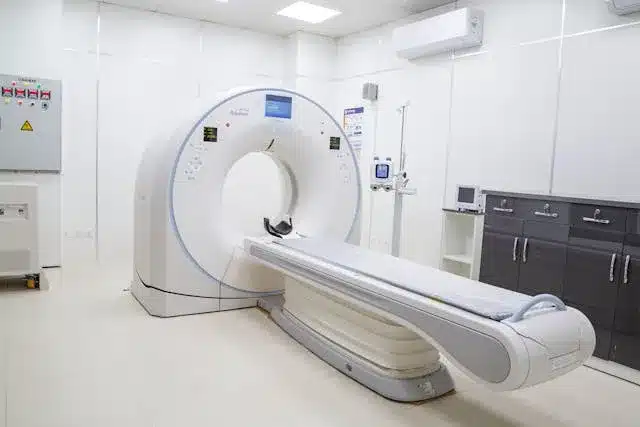In today’s rapidly evolving healthcare industry, efficiency and accuracy are crucial, particularly in diagnostic imaging. The integration of advanced healthcare technologies is transforming the way imaging services are delivered, enabling faster results, improved patient care, and reduced costs. In this article, we will explore strategies and technologies that can significantly enhance diagnostic imaging efficiency.
Also Read: Good Luck in Your Future Endeavors 20 Fresh Alternatives.
The Importance of Efficiency in Diagnostic Imaging
Diagnostic imaging plays a pivotal role in healthcare, assisting physicians in identifying and treating a wide range of conditions. Delays or inefficiencies in imaging can lead to misdiagnoses, prolonged patient waiting times, and increased healthcare costs. To address these challenges, healthcare providers must adopt innovative technologies and streamlined workflows that optimize imaging processes.
Embracing Enterprise PACS Systems
One of the most effective ways to enhance diagnostic imaging efficiency is through the implementation of Enterprise Picture Archiving and Communication Systems (PACS). These systems centralize and streamline the storage, retrieval, and sharing of medical images, offering numerous benefits:
- Improved Accessibility: Enterprise PACS systems enable healthcare professionals to access imaging data anytime and anywhere, facilitating faster diagnoses.
- Enhanced Collaboration: Specialists can share and review images in real-time, ensuring a more collaborative approach to patient care.
- Cost Savings: By digitizing and centralizing imaging data, PACS systems reduce the need for physical storage and minimize duplication of imaging studies.
For example, sepStream offers cutting-edge Enterprise PACS Imaging Solutions tailored to meet the needs of healthcare providers. Their solutions are designed to enhance operational efficiency while maintaining affordability and top-tier performance.
Leveraging Artificial Intelligence in Imaging
Artificial intelligence (AI) is revolutionizing diagnostic imaging by automating routine tasks and improving accuracy. AI-powered tools can analyze images faster and more accurately than human radiologists in some cases, reducing the risk of errors and enabling earlier detection of diseases. Key applications of AI in diagnostic imaging include:
- Image Analysis: AI algorithms can identify abnormalities such as tumors, fractures, or vascular diseases with high precision.
- Workflow Optimization: AI tools prioritize urgent cases, ensuring that critical patients receive prompt attention.
- Predictive Analytics: AI systems can predict patient outcomes and assist in treatment planning based on imaging data.
By integrating AI with systems like PACS, healthcare providers can achieve unprecedented levels of efficiency and accuracy.
Enhancing Workflow Integration
Streamlined workflows are essential for maximizing efficiency in diagnostic imaging. To achieve this, healthcare providers should focus on:
- Automated Scheduling: Implementing systems that automate imaging appointments based on patient availability and resource allocation.
- Seamless Data Integration: Ensuring that imaging systems are compatible with electronic health records (EHRs) for smooth data exchange.
- Standardized Protocols: Developing standardized imaging protocols to reduce variability and improve consistency.
Platforms like those offered by excel in integrating imaging workflows with other healthcare systems, ensuring seamless operations.
Emphasizing Patient-Centric Care
Efficiency in diagnostic imaging isn’t just about technology; it’s also about improving the patient experience. Here are some ways to achieve patient-centered care:
- Transparent Communication: Keeping patients informed about their imaging procedures and results fosters trust and reduces anxiety.
- Reduced Waiting Times: Advanced imaging technologies and optimized workflows minimize patient waiting periods.
- Comfortable Imaging Environments: Ensuring that imaging facilities are welcoming and comfortable for patients.
The Role of Cloud-Based Solutions
Cloud-based imaging solutions offer another avenue for improving efficiency. These solutions provide secure, scalable storage and easy access to imaging data. Benefits include:
- Remote Access: Clinicians can review imaging results from any location.
- Scalability: Cloud systems can accommodate growing volumes of imaging data without requiring additional hardware.
- Data Security: Advanced encryption and compliance with healthcare regulations ensure the safety of patient data.
Cloud solutions, such as those provided by , represent the future of diagnostic imaging, combining innovation with practicality.
Training and Continuous Improvement
Even the best technologies require skilled professionals to operate them. Regular training and professional development are essential for maximizing the benefits of diagnostic imaging systems. Healthcare organizations should:
- Provide Ongoing Education: Equip staff with the latest knowledge about imaging technologies and protocols.
- Encourage Collaboration: Foster teamwork among radiologists, technologists, and IT professionals.
- Monitor Performance: Use data analytics to track performance and identify areas for improvement.
Conclusion
Improving diagnostic imaging efficiency is a multifaceted endeavor that requires a combination of advanced technology, streamlined workflows, and patient-centered care. By embracing solutions like Enterprise PACS, AI-powered tools, and cloud-based platforms, healthcare providers can deliver faster, more accurate diagnoses and enhance overall patient outcomes.
Providers such as sepStream are at the forefront of this transformation, offering innovative and affordable solutions tailored to the evolving needs of the healthcare industry. By investing in these technologies, healthcare organizations can not only improve operational efficiency but also contribute to a better standard of care for patients worldwide.







